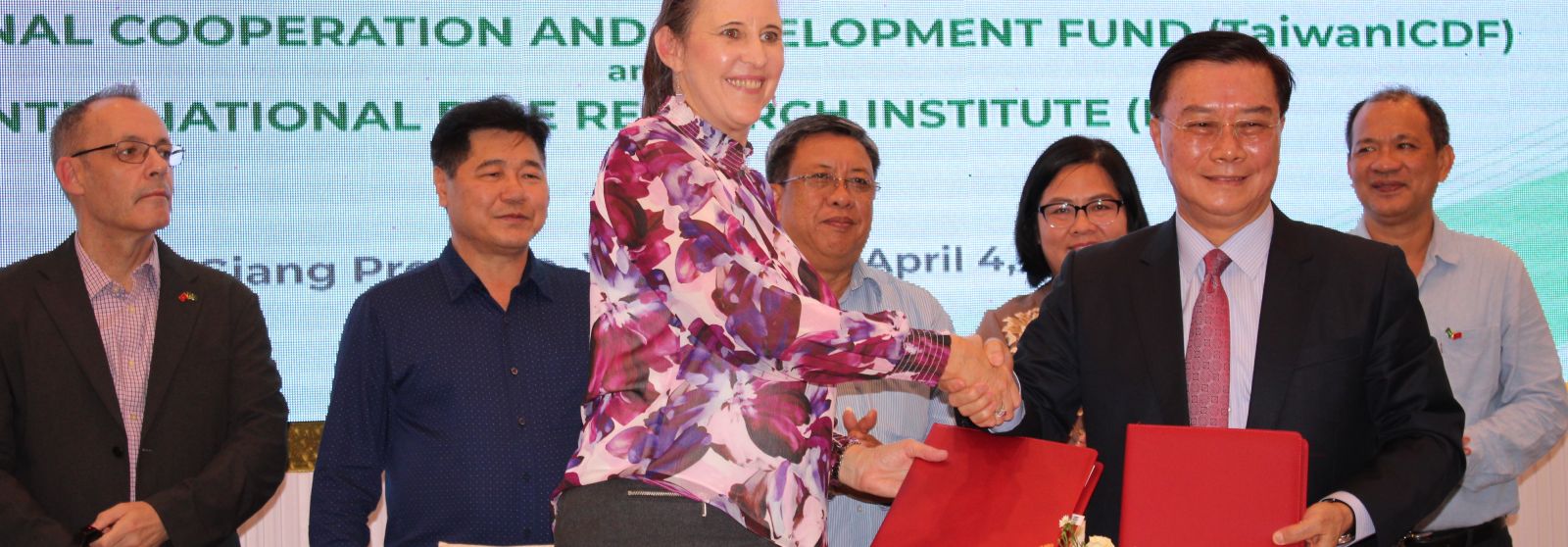IRRI and Taiwan ICDF tackle the climate and food crises by fostering rice straw circular economies in SEA
- From
-
Published on
12.04.24
- Impact Area

The International Rice Research Institute (IRRI) and the International Cooperation and Development Fund (TaiwanICDF) signed a cooperation agreement to implement the Capacity Building for Sustainable and Low-Carbon Rice Innovations in Southeast Asia (Cabin) project. This initiative aims to bridge knowledge gaps in sustainable and low-carbon rice production, focusing on sustainable rice straw innovations to enhance productivity and income while reducing environmental impact from 2024 to 2028.
Intensification of rice cropping systems has caused larger volumes of rice straw to be produced in fields. Farmers often burn rice straw since they consider it the easiest way to manage these by-products which they perceive as wastes. Burning rice straw causes damage to the soil, leading to loss of nutrients and increased greenhouse gas production, resulting in an overall degradation of air quality.
The Cabin project aims to support sustainable agriculture and foster circular economy transformation in five key countries: Vietnam, the Philippines, Indonesia, Cambodia, and Laos by uplifting capacities and promoting sustainable and low-carbon rice straw management. Circular economies allow farmers to earn more while lowering their carbon footprints. For example, instead of burning rice straw, it can be used as mulch for mushroom production which can then be turned into compost that can be fed back into the field to improve soil fertility.
According to IRRI Scientist Dr. Nguyen Van Hung, Cabin’s Project Leader, the five countries have a high demand for capacity building in sustainable and low-carbon rice production. Vietnam, renowned for its significant rice production and export numbers with roughly 45 million tonnes of rice annually, sets the stage for IRRI’s exemplary advancements in rice straw innovations. Meanwhile, countries like Indonesia, Cambodia, the Philippines, and Laos also contribute substantially to the annual global rice output– generating 56, 44, 26,…
Related news
-

Bridging science, finance, and restoration: Insights from the sustainable beef investment roundtable
Multifunctional Landscapes Science Program17.11.25-
Climate adaptation & mitigation
Rome, 2–4 October 2025 — The Sustainable Beef Investment Roundtable brought together over 50 pa…
Read more -
-

COP30 Week 1: Negotiation Highlights and CGIAR Perspectives
Climate Action Science Program17.11.25-
Adaptation
-
Climate adaptation & mitigation
-
Mitigation
Week 1 of COP30 in Belém, Brazil – set against the backdrop of the Amazon…
Read more -
-

DTA at COP30: Why Digital Transformation Belongs at the Heart of Climate Action
Climate Action Science Program13.11.25-
Adaptation
-
Climate adaptation & mitigation
-
Mitigation
As the world gathers in Brazil for COP30, the conversations are once again focused on…
Read more -
